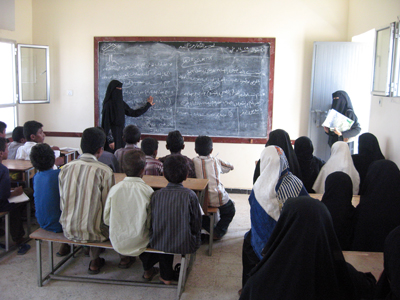
Jihadist ideas and scholarship are intertwined at Al Eman University in Sana, Yemen. The university has more than 4,000 students and teaches courses in Islam and Western disciplines, sometimes mixing the two. The university, the size of a village, was founded in 1993 by Sheik Abdul Majid al-Zindani, a revered spiritual leader, theological adviser to Osama bin Laden an co-founder of the main Yemeni opposition party, Islah.
Sheik Zindani, is thought to be 59 and favoring a long dyed beard. He is well known for his effort to prove that the Koran predicts Western scientific discoveries, and there are reports that he has even claimed to have cured AIDS. However, in 2004, the United States Treasury put Mr. Zindani on a list of “specially designated global terrorists” for suspected fund-raising for Al Qaeda and other terrorist groups.
The terrorism threat in Yemen is a reality. However, will US and global intervention help matter or make them worse? Jihadist ideas are ingrained in daily life because there is proof that these ideas are taught in schools and universities.
Sheik Zindani said that the “U.K. request for an international conference on Yemen is meant to pave the way for a U.N. Security Council resolution to approve an occupation of Yemen and to put it under a U.N. mandate.” According to Al Jazeera, Zindani said that Washington’s “so-called war on terror is in fact a war against Islam.”
Therefore, will US involvement improve conditions and the education system in Yemen or will they cause further violence? Only time will tell, if the involvement in rebuilding Iraq and Afghanistan are any indication.
View more pictures.
(Photo: courtesy of yobserver.com)











